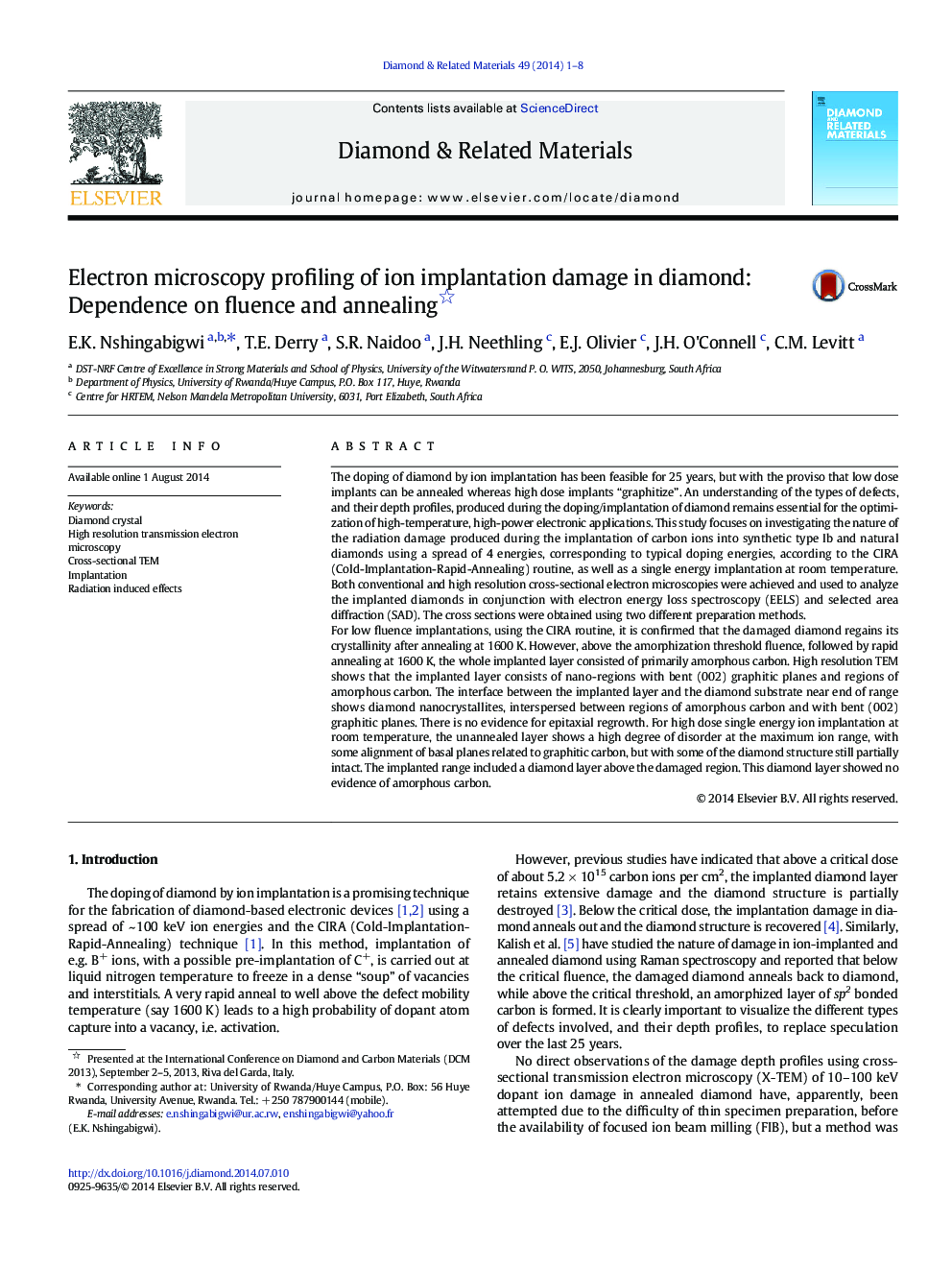| کد مقاله | کد نشریه | سال انتشار | مقاله انگلیسی | نسخه تمام متن |
|---|---|---|---|---|
| 702113 | 1460782 | 2014 | 8 صفحه PDF | دانلود رایگان |
• Cross-sectional TEM of diamond implanted in the 100 keV dopant energy range achieved
• Two methods were used to create cross-sections, viz. edge implantation and FIB.
• Radiation damage was profiled both below and above the dose threshold for annealing.
• Graphitic and damaged diamond regions pinpointed after high fluence C+ implantation.
• No solid phase epitaxial diamond regrowth was observed after annealing.
The doping of diamond by ion implantation has been feasible for 25 years, but with the proviso that low dose implants can be annealed whereas high dose implants “graphitize”. An understanding of the types of defects, and their depth profiles, produced during the doping/implantation of diamond remains essential for the optimization of high-temperature, high-power electronic applications. This study focuses on investigating the nature of the radiation damage produced during the implantation of carbon ions into synthetic type Ib and natural diamonds using a spread of 4 energies, corresponding to typical doping energies, according to the CIRA (Cold-Implantation-Rapid-Annealing) routine, as well as a single energy implantation at room temperature. Both conventional and high resolution cross-sectional electron microscopies were achieved and used to analyze the implanted diamonds in conjunction with electron energy loss spectroscopy (EELS) and selected area diffraction (SAD). The cross sections were obtained using two different preparation methods.For low fluence implantations, using the CIRA routine, it is confirmed that the damaged diamond regains its crystallinity after annealing at 1600 K. However, above the amorphization threshold fluence, followed by rapid annealing at 1600 K, the whole implanted layer consisted of primarily amorphous carbon. High resolution TEM shows that the implanted layer consists of nano-regions with bent (002) graphitic planes and regions of amorphous carbon. The interface between the implanted layer and the diamond substrate near end of range shows diamond nanocrystallites, interspersed between regions of amorphous carbon and with bent (002) graphitic planes. There is no evidence for epitaxial regrowth. For high dose single energy ion implantation at room temperature, the unannealed layer shows a high degree of disorder at the maximum ion range, with some alignment of basal planes related to graphitic carbon, but with some of the diamond structure still partially intact. The implanted range included a diamond layer above the damaged region. This diamond layer showed no evidence of amorphous carbon.
Journal: Diamond and Related Materials - Volume 49, October 2014, Pages 1–8
